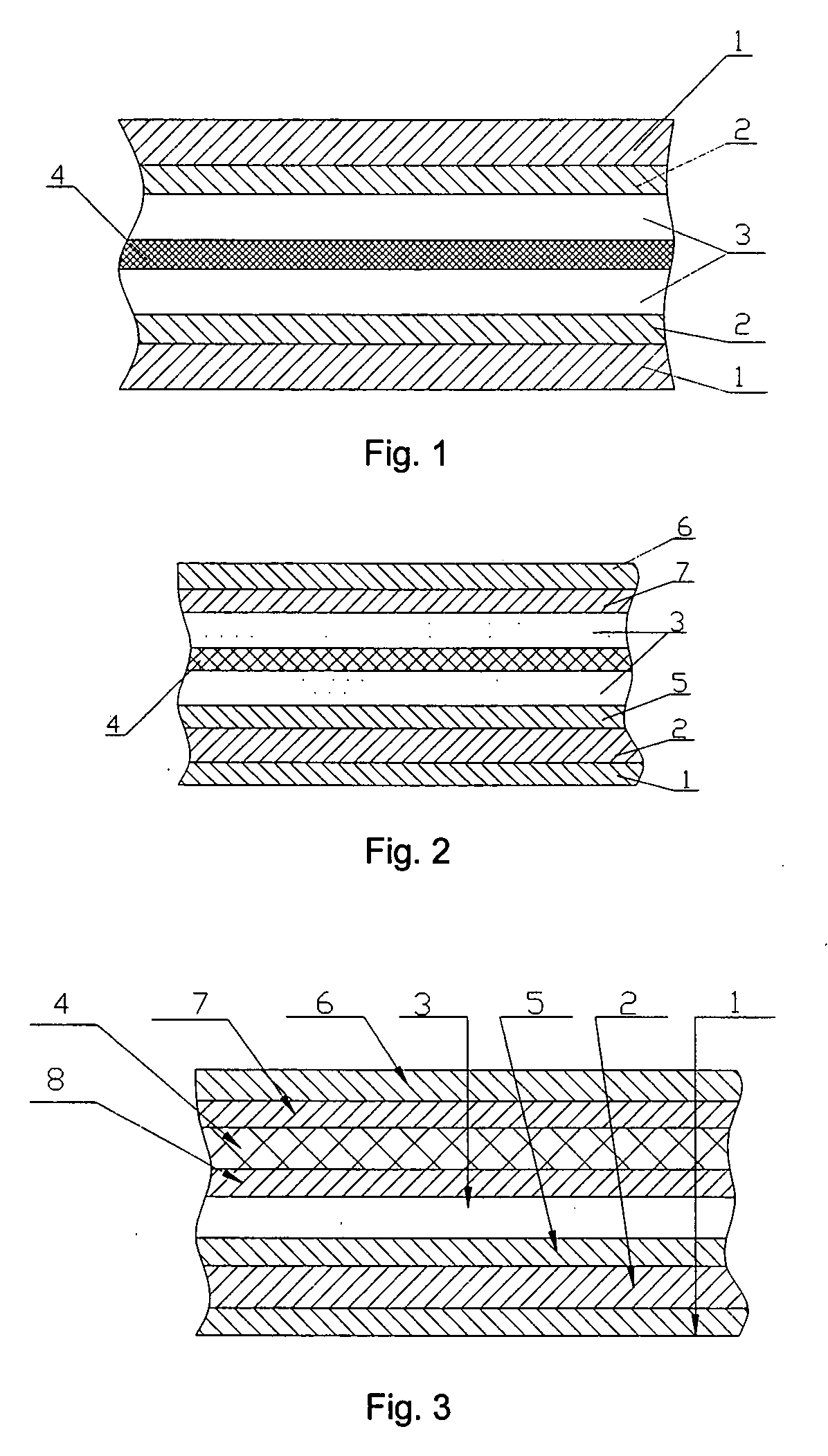Roofing underlayment material and process for making the same
a technology for roofing underlayment and process, applied in the field of waterproof materials, can solve the problems of poor environmental protection properties, environmental pollution, water leakage or seepage, etc., and achieve the effects of enhancing weathering resistance and peeling strength, improving water-proof and leak-proof properties of multiple-layer roofing underlayment materials, and avoiding environmental pollution
- Summary
- Abstract
- Description
- Claims
- Application Information
AI Technical Summary
Benefits of technology
Problems solved by technology
Method used
Image
Examples
example 1
[0040] Referring to FIG. 1, a roofing underlayment material comprises non-woven fabric layers 1, in which the non-woven fabric can be classified into polypropylene fiber non-woven fabric, polyester fiber non-woven fabric and viscose fiber non-woven fabric based on material thereof, or into spun-laced non-woven fabric, calender-bonded non-woven fabric, air laid pulp non-woven fabric, wet laid non-woven fabric, spun-bond non-woven, needle-punched non-woven fabric, stitch-bonded non-woven fabric, etc. based on the process thereof, and the non-woven fabric layers are of one layer or two layers or more layers. The non-woven fabric layers 1 belong to the prior art and thus will not be described in detail here. Film layers 2 are set between the compositing surfaces of the non-woven fabric layers 1. The film layers 2 are PE film or PP film, which are plastic layers with water-proof and temperature-resistance. The technique for making the film layers belongs to the prior art and thus will no...
example 2
[0041] On the basis of Example 1, each film layer 2 is one layer or two layers or multiple layers.
example 3
[0042] Referring to FIG. 2, a roofing underlayment material comprises non-woven fabric outer layers 1 and 6, wherein a film layer 2 is set between the non-woven fabric outer layers 1 and a non-woven fabric inner layer 5, a film layer 7 and an asphalt layer 3 are set in order between the non-woven fabric inner layer 5 and the non-woven fabric outer layer 6, and a glass-fiber netlike reinforcement layer 4 is set within the asphalt layer 3.
PUM
| Property | Measurement | Unit |
|---|---|---|
| temperature | aaaaa | aaaaa |
| temperature | aaaaa | aaaaa |
| temperature distribution | aaaaa | aaaaa |
Abstract
Description
Claims
Application Information
 Login to View More
Login to View More - R&D
- Intellectual Property
- Life Sciences
- Materials
- Tech Scout
- Unparalleled Data Quality
- Higher Quality Content
- 60% Fewer Hallucinations
Browse by: Latest US Patents, China's latest patents, Technical Efficacy Thesaurus, Application Domain, Technology Topic, Popular Technical Reports.
© 2025 PatSnap. All rights reserved.Legal|Privacy policy|Modern Slavery Act Transparency Statement|Sitemap|About US| Contact US: help@patsnap.com


